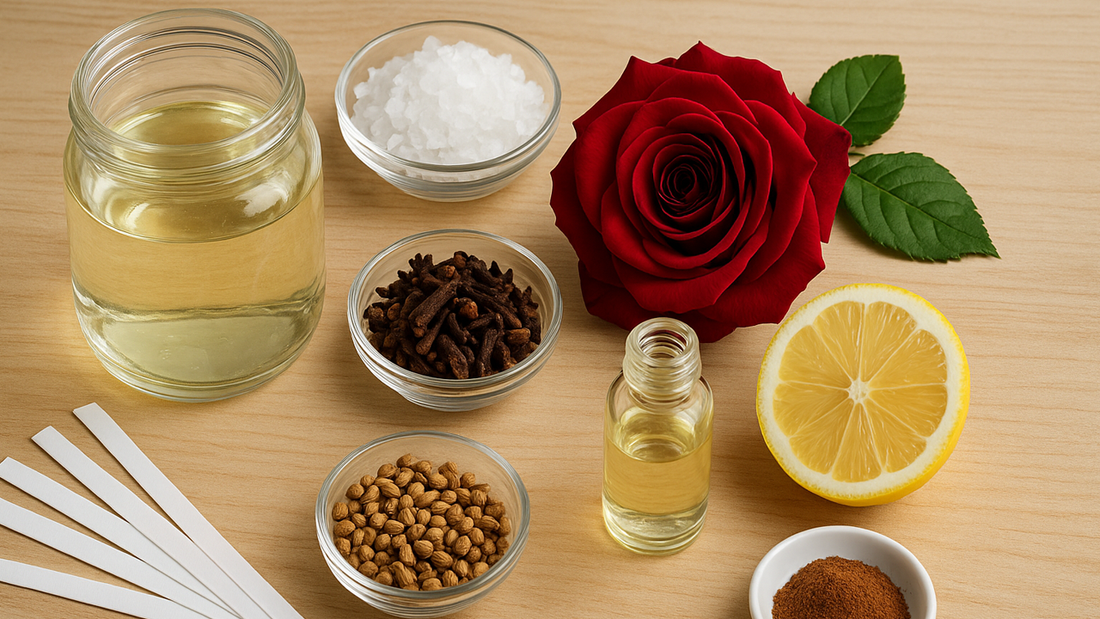Manufacturers blend art, creativity, and science for magnificent perfumes. However, synthetic chemicals are playing a key role in developing beautiful fragrances in today’s age. From lavish floral compositions to delicate smoky scents, each fragrance can stimulate the senses and unlock memories. But how do aroma chemicals contribute to our favourite fragrances? What are their proportions? This blog will discuss the role of aroma chemicals in long-lasting fragrances.
The perfume pyramid - The secret behind a well-proportioned scent
A well-proportioned perfume is created in three layers. It is commonly called "the perfume pyramid".
Top notes: The top layer is the Top Notes, which make the initial impression. They are light and volatile molecules. These molecules dissipate rapidly but provide the instant fragrance punch. Popular top notes employed in everyday perfumes are citrus notes. Mostly, limonene and aldehydes are popular ones.
Heart notes: The second tier is the Heart Notes. It is also referred to as the "main character" of the fragrance. They are the building blocks of the scent and tend to be floral, fruity, spicy, or herbal. Some examples include linalool and pulegone.
Base notes: Lastly, the Base Notes leave a lasting impression. They are heavy and long-lasting molecules that stay on the skin for hours. They can add depth, warmth, and richness to the fragrance. Common base notes are ambroxan (ambergris), musk ketone, and patchouli alcohol.
For example, Chanel No. 5 shows this pyramid to perfection: aldehydes take over the top notes, jasmine and roses make the heart richer, while vanilla provides heat in the base notes. All of these lead to an iconic perfume.
The concentration levels
The strength and duration of a perfume are determined by the concentration of aromatic compounds. A typical luxury perfume has 15-20% aromatic compounds. Therefore, it is more concentrated and longer-lasting than mists or regular deodorants.
Luxury scents usually come in the eau de parfum category. Due to the higher concentration of fragrance oils, one needs less product. Plus, the scent will last anywhere from a few hours up to the whole day.
Popular aroma chemicals and their contribution to notes
1. Terpinolene (Top note)
It is a compound with a rich and delicate chemistry. Its smell is a woody-piney aroma with soft citrus and floral undertones. It usually smells like freshly rain-washed forest with a hint of lime and lilac. It is very volatile and evaporates readily.
Common use: Employed in perfumery to provide a lifting and fresh quality to top notes. Also used in the creation of pine or tea tree-like fragrances.
2. Spearmint oil (Top note)
This one is a traditional, sweet, and warm minty fragrance. It is different from the sharper, colder fragrance of peppermint. It is rather fresh, herbaceous, and uplifting.
Common use: Used mainly to give an instantaneous, clean, and revitalising burst in perfumes. You may find it commonly in aquatic, citrus, and fougère aromatic types.
3. L-Carvone (Top note)
This molecule has a spearmint-like, distinctive smell. Its odour is intensely sweet, minty, and herbal.
Common use: Utilised to produce spearmint, caraway, and dill impressions. It provides a sweet-minty freshness to perfumes.
4.  (Middle note)
(Middle note)
The aroma chemical is responsible for the warm, spicy, sweet, and balsamic smell. It has an energetic, pungent character that is immediately familiar.
Common use: A classic in oriental and spicy scent families. It provides warmth, depth, and a spicy note of familiarity that's reassuring yet stimulating.
Conclusion
A memorable fragrance is a science that depends on the skilled use of aroma chemicals. Each compound is essential for building a scent's identity and longevity. For a perfume aroma manufacturer in India, mastering the balance of these elements is key to creating unique, high-quality, and consistent fragrances. If you are into perfume innovation or want to push the boundaries of possibility, contact SBBLG. We are a large-scale supplier of aroma chemicals. Our aroma chemicals can cater to different industries, including perfumery. Visit our website for more information or contact our sales team at sales@sbblgroup.com.








